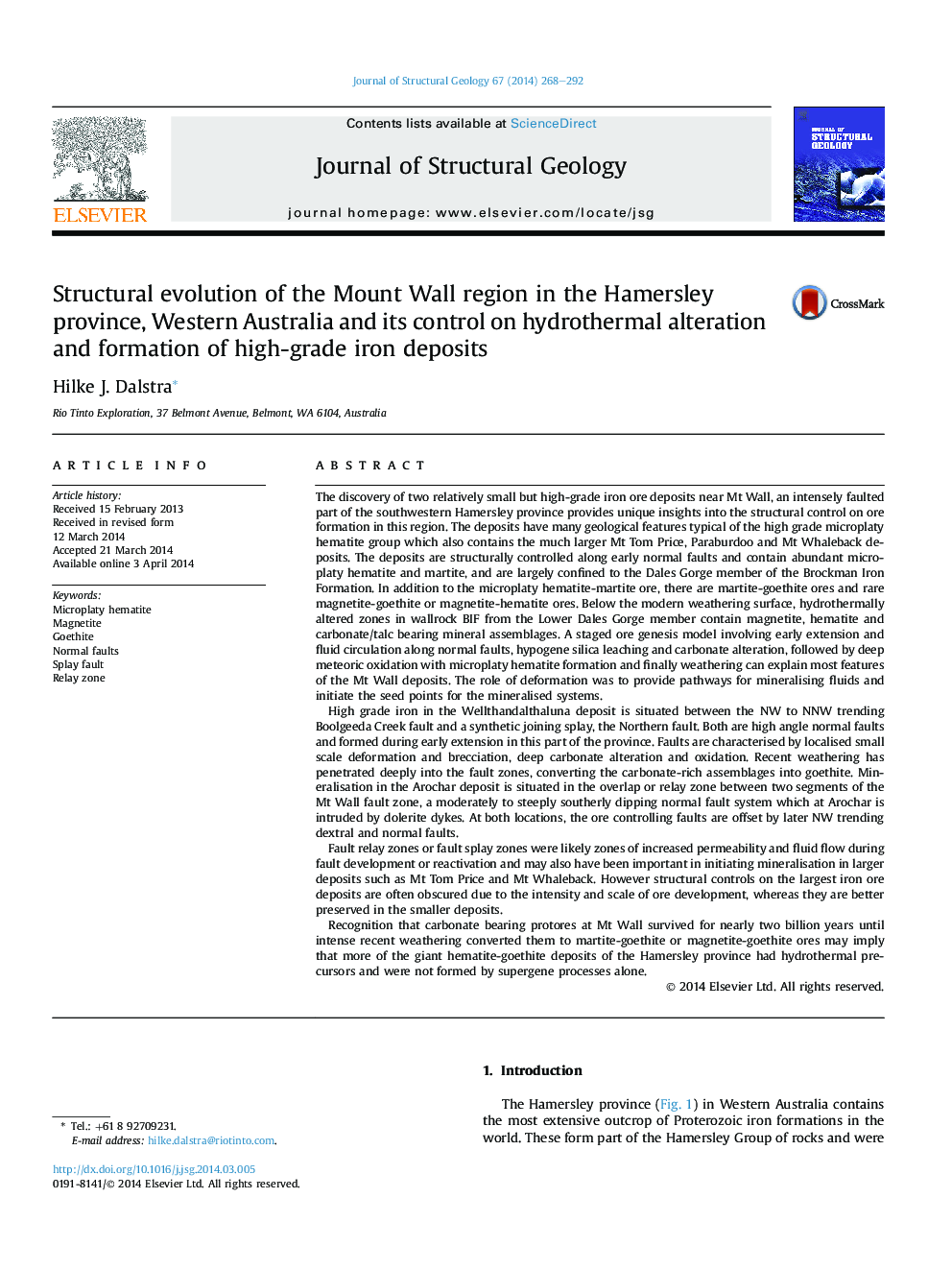| کد مقاله | کد نشریه | سال انتشار | مقاله انگلیسی | نسخه تمام متن |
|---|---|---|---|---|
| 4733048 | 1356983 | 2014 | 25 صفحه PDF | دانلود رایگان |
• This paper documents the structure of the Mt Wall region in the Hamersley province.
• In this region high grade iron ore is associated with the earliest normal faults.
• Iron ores occur in highly deformed zones in iron formation adjacent to these faults.
• These zones are related to joining splay faults or fault relay zones.
• Wallrock alteration assemblages contain magnetite, hematite, carbonate and talc.
The discovery of two relatively small but high-grade iron ore deposits near Mt Wall, an intensely faulted part of the southwestern Hamersley province provides unique insights into the structural control on ore formation in this region. The deposits have many geological features typical of the high grade microplaty hematite group which also contains the much larger Mt Tom Price, Paraburdoo and Mt Whaleback deposits. The deposits are structurally controlled along early normal faults and contain abundant microplaty hematite and martite, and are largely confined to the Dales Gorge member of the Brockman Iron Formation. In addition to the microplaty hematite-martite ore, there are martite-goethite ores and rare magnetite-goethite or magnetite-hematite ores. Below the modern weathering surface, hydrothermally altered zones in wallrock BIF from the Lower Dales Gorge member contain magnetite, hematite and carbonate/talc bearing mineral assemblages. A staged ore genesis model involving early extension and fluid circulation along normal faults, hypogene silica leaching and carbonate alteration, followed by deep meteoric oxidation with microplaty hematite formation and finally weathering can explain most features of the Mt Wall deposits. The role of deformation was to provide pathways for mineralising fluids and initiate the seed points for the mineralised systems.High grade iron in the Wellthandalthaluna deposit is situated between the NW to NNW trending Boolgeeda Creek fault and a synthetic joining splay, the Northern fault. Both are high angle normal faults and formed during early extension in this part of the province. Faults are characterised by localised small scale deformation and brecciation, deep carbonate alteration and oxidation. Recent weathering has penetrated deeply into the fault zones, converting the carbonate-rich assemblages into goethite. Mineralisation in the Arochar deposit is situated in the overlap or relay zone between two segments of the Mt Wall fault zone, a moderately to steeply southerly dipping normal fault system which at Arochar is intruded by dolerite dykes. At both locations, the ore controlling faults are offset by later NW trending dextral and normal faults.Fault relay zones or fault splay zones were likely zones of increased permeability and fluid flow during fault development or reactivation and may also have been important in initiating mineralisation in larger deposits such as Mt Tom Price and Mt Whaleback. However structural controls on the largest iron ore deposits are often obscured due to the intensity and scale of ore development, whereas they are better preserved in the smaller deposits.Recognition that carbonate bearing protores at Mt Wall survived for nearly two billion years until intense recent weathering converted them to martite-goethite or magnetite-goethite ores may imply that more of the giant hematite-goethite deposits of the Hamersley province had hydrothermal precursors and were not formed by supergene processes alone.
Journal: Journal of Structural Geology - Volume 67, Part B, October 2014, Pages 268–292
